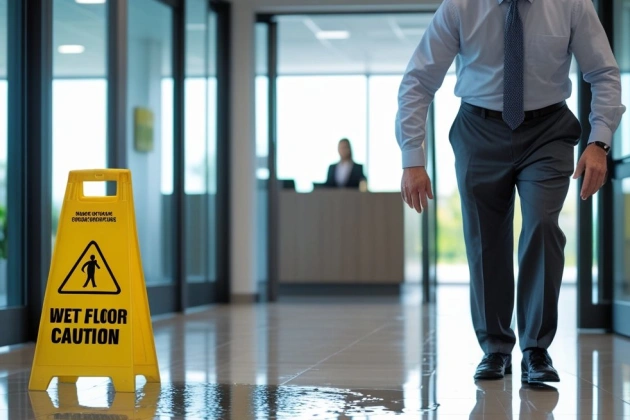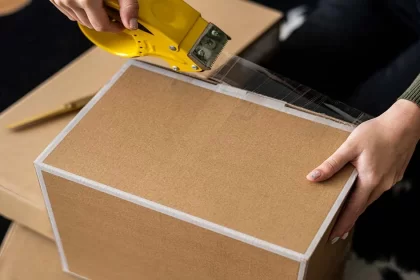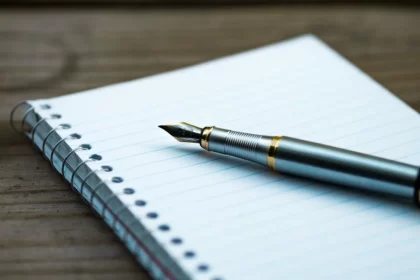When someone falls on a company’s property, the immediate question is whether they can take legal action. Yes, a person can sue a company if they are injured due to unsafe conditions on the company’s property, but success depends on proving negligence.
The company must have known or should have known about the hazard and failed to address it. Liability often hinges on the property owner’s duty to maintain a safe environment for visitors.
Understanding the specifics of premises liability law and how it applies in each case is crucial. This article explores key factors that determine when a company can be held responsible for slip and fall injuries.
Understanding Liability for Falls on Company Property
When a person falls on company property, liability depends on specific legal factors. These include who is responsible for safety, the nature of the property, and the condition that caused the fall.
Premises Liability Basics
Premises liability refers to the legal responsibility a property owner or occupant has for injuries occurring on their property. The main element is whether the company failed to maintain a reasonably safe environment.
Liability arises when dangerous conditions are known or should have been known. Examples include wet floors without warning signs, uneven walkways, or poor lighting. The injured person must prove that the company’s negligence caused the fall.
Greenville personal injury lawyers emphasize documenting conditions and timely reporting incidents. This helps establish proof of negligence when filing claims.
Duty of Care and Legal Responsibility
Companies owe a duty of care to visitors, employees, and customers. This means they must take reasonable steps to prevent hazards that could cause injury.
The level of duty varies by visitor type: invitees (customers) receive the highest protection, followed by licensees, and then trespassers. Most falls involve invitees, requiring companies to regularly inspect and fix risks.
Failure to act on known dangers, or to reasonably foresee potential risks, can make a company legally liable. Evidence such as maintenance records and surveillance footage often plays a key role in legal claims.
Types of Properties Covered
Premises liability covers various property types, including retail stores, office buildings, warehouses, and parking lots. Each has different risks and safety standards. Retail businesses must maintain safe floors and aisles. Warehouses should control large equipment and uneven surfaces. Parking lots require clear signage and proper lighting to prevent slips or trips.
Greenville personal injury lawyers often deal with cases across these property types. Identifying the property classification helps determine specific safety laws and potential defenses by the company.
Key Factors That Affect Your Right to Sue
Several specific elements determine whether a person can successfully sue after falling on a company’s property. These include the company’s negligence, the predictability of hazards, and the role of any fault on the injured party’s side.
Negligence and Proof Requirements
To sue a company, the injured person must prove the business was negligent. This means showing the company failed to maintain safe premises or did not fix known dangers.
Evidence usually includes photos of the hazard, witness statements, or maintenance records. The company’s duty is to ensure reasonable safety, not perfection. If the hazard was hidden or sudden, proving negligence is harder.
Documentation and timely reporting of the injury strengthen the claim. Without proof that the company breached its duty, a lawsuit is unlikely to succeed.
Foreseeable Hazards and Preventive Measures
Liability often depends on whether the hazard was foreseeable. Businesses are expected to identify and address risks they know or should know about.
If the company took reasonable steps like signs, lighting, or repairs, this can limit liability. However, hazards that were ignored or inadequately addressed increase the chance of a successful claim.
The history of similar incidents at the location also matters. Repeated falls may prove that the company failed to act on preventable dangers.
Comparative Fault Considerations
Courts may reduce compensation if the injured person shares some blame. This is known as comparative fault or contributory negligence. For example, if the person was distracted, ignored warning signs, or wore inappropriate footwear, it could affect the lawsuit outcome. The degree of fault is usually expressed as a percentage.
Even if partially responsible, the injured party may still recover damages, but those are lowered by their share of the fault. Understanding this helps set realistic expectations when suing a company.
Legal Process for Filing a Personal Injury Claim
Filing a personal injury claim involves specific steps to ensure the case is documented and legally actionable. It requires timely reporting, careful evidence collection, and understanding the legal time limits.
Reporting the Incident and Gathering Evidence
The injured party should report the accident to the property owner or management immediately. This creates an official record of the incident.
Documenting the scene with photos of hazards or injuries is crucial. Collect contact information from any witnesses present. Medical records confirming the injury and treatment are essential for proving damages.
Filing an incident report, if available, and keeping a personal injury diary detailing symptoms and recovery progress can strengthen the claim.
Role of Legal Representation
Personal injury lawyers play a key role in these cases. They evaluate the evidence, assess liability, and navigate complex insurance or legal systems.
An experienced attorney helps calculate fair compensation for medical bills, lost wages, and pain. They also communicate with the defendant’s legal team or insurance adjusters.
Legal counsel increases the chances of a successful settlement or trial outcome by ensuring procedural compliance and advocating for the claimant’s rights.
Timeline and Statute of Limitations
Every state has a statute of limitations that limits the time to file a personal injury claim, typically ranging from one to three years. Filing beyond this deadline usually results in case dismissal. Therefore, prompt action is vital.
Consulting a lawyer as soon as possible helps ensure the claim is filed within the legal time frame and all necessary documentation is prepared in time.
Common Defenses Used by Companies
Companies often use specific legal defenses to avoid liability when someone falls on their property. These defenses focus on fault, the visibility of hazards, and whether the injury was truly caused by the company’s negligence.
Challenging Causation and Responsibility
Companies frequently argue that the plaintiff’s injury was not caused by their property conditions. They may claim that the fall resulted from the individual’s own carelessness or an unrelated factor.
For example, if a person trips but was distracted or wearing improper footwear, the company might say these elements caused the fall instead. They can also contest whether the specific hazard actually existed or contributed to the injury at the time of the incident.
Claiming Lack of Negligence
A key defense is to deny negligence by showing the business met reasonable care standards. This includes regular inspections and timely repairs.
If a company can prove it maintained the property according to industry standards and laws, it argues that it did not act negligently. Evidence might consist of maintenance logs, employee testimony, or evidence of weather conditions that made hazards unavoidable.
Open and Obvious Doctrine
Some companies rely on the open and obvious doctrine, which states that hazards that are plainly visible do not create liability. They argue the injured party should have seen the danger and avoided it.
For example, a wet floor with clear signage might be considered an open and obvious hazard. If a risk is easily noticeable, courts may limit the company’s responsibility for injuries related to it. This defense shifts some blame to the injured person for failing to exercise caution.
Potential Outcomes and Compensation
When someone falls on a company’s property and files a claim, the results often depend on the severity of the injury and the strength of evidence. Compensation can come in different forms, and cases may be resolved through settlements or court verdicts.
Types of Damages You May Recover
In a successful claim, the injured party can seek various damages, including medical expenses, lost wages, and pain and suffering. Medical expenses cover hospital bills, rehabilitation, and future treatment costs.
Lost wages compensate for income missed due to the injury. Pain and suffering address physical pain and emotional distress. In some cases, property damage or loss of earning capacity may also be awarded.
Damages aim to restore the injured person financially and emotionally to the condition before the fall. The amount depends on factors like injury severity, proof of negligence, and local laws.
Settlements vs. Court Verdicts
Many slip and fall cases resolve through settlements, which involve negotiation between the injured person and the company or its insurer. Settlements provide quicker resolution and a guaranteed payment but may be less than what a court could award.
In contrast, a court verdict results from a judge or jury decision after a trial. Verdicts can lead to larger compensation but involve more time, expense, and uncertainty.
Choosing between settlement and trial depends on case strength, willingness to negotiate, and risk tolerance. Legal advice often helps determine the best course of action.










